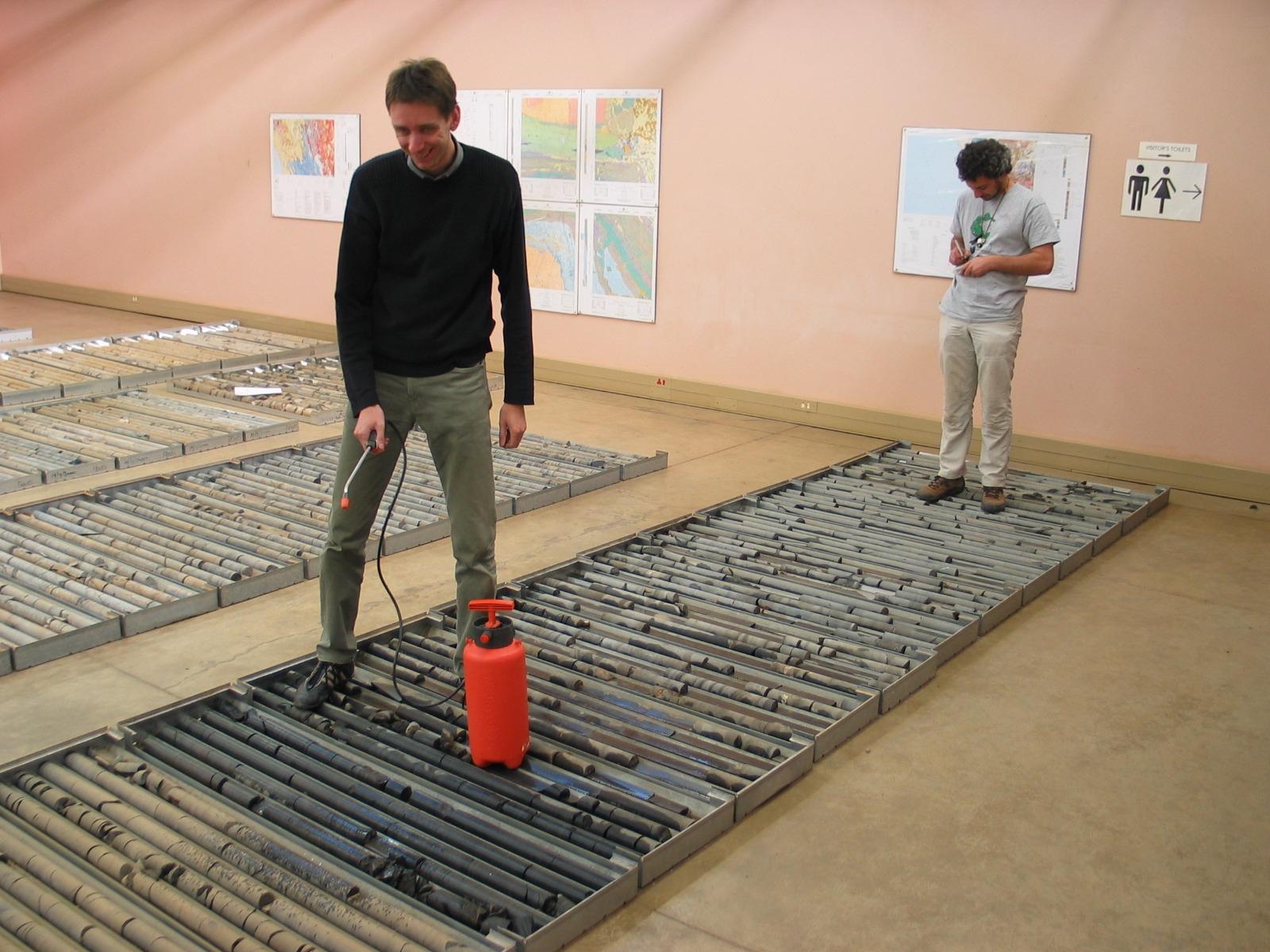Apr 6 2021
A new study reveals that the permanent increase in oxygen in the Earth’s atmosphere, which enabled the emergence of life as it is known, occurred 100 million years later than considered earlier.
 Biogeochemist Simon Poulton, left, sprays water on drill core to see sedimentary rocks and select samples for research. Image Credit: Andrey Bekker/UCR.
Biogeochemist Simon Poulton, left, sprays water on drill core to see sedimentary rocks and select samples for research. Image Credit: Andrey Bekker/UCR.
A major increase in oxygen happened nearly 2.43 billion years ago, which marked the beginning of the Great Oxidation Episode—a crucial moment in Earth’s history.
An international team of scientists, including a researcher from UC Riverside, investigated rocks from South Africa formed at the time of this event.
The results of this study were published this week in the Nature journal and describe the finding that oxygen fluctuated drastically following its early occurrence until it turned into a permanent constituent of the atmosphere much later.
Such fluctuations support the occurrence of a direct link between atmospheric oxygen and concentrations of greenhouse gases like methane, thus helping to explain some of the most intense climatic changes in the Earth’s past.
In the same period, ancient Earth underwent four glaciations—periods in which the entire planet was covered with ice and snow for millions of years.
Andrey Bekker, a geologist at UC Riverside, notes that changes in atmospheric oxygen levels triggered and ended these events.
Researchers have often wished to know how the planet could have evolved from the periods where snow and ice covered everything, including the oceans. Bekker added that increases in atmospheric oxygen levels led to low concentrations of greenhouse gases, like carbon dioxide and methane.
This brought about global glaciations by retaining surface conditions lower than the water-freezing temperature.
Eruptions of volcanoes continued on the frozen planet, contributing to the needed high carbon dioxide levels in the atmosphere to emerge out of climatic catastrophe by warming the planet and melting the ice and snow.
Before this work, we all wondered why the fourth glacial event happened if oxygen was already a steady component in the atmosphere. We found it was not steady. The permanent rise of oxygen actually occurred after the fourth, final glaciation in the Paleoproterozoc Era, and not before it, and this solves what had previously been a major puzzle in our understanding.
Andrey Bekker, Geologist, UC Riverside
The Great Oxidation Episode brought about a 1.5 billion-year period of succeeding environmental stability, which continued until a second major transitional period, characterized by increasing atmospheric oxygen and similar climatic changes toward the end of the Precambrian time.
We thought once oxygen increased it wouldn’t ever return back to lower levels. Now we have learned it fluctuated to very low levels and this could have dramatic implications in terms of understanding extinction events and the evolution of life.
Andrey Bekker, Geologist, UC Riverside
According to Simon Poulton, a biogeochemist at Leeds University who headed the study, open questions include the reasons for such multiple fluctuations, and whether complex life could have emerged and then perished out again due to such fluctuations.
We cannot begin to understand the causes and consequences of atmospheric oxygenation, the most significant control on Earth’s habitability, if we do not know when permanent atmospheric oxygenation actually occurred. Now at last we have that piece of the puzzle.
Simon Poulton, Biogeochemist, Leeds University
Journal Reference:
Poulton, S. W., et al. (2021) A 200-million-year delay in permanent atmospheric oxygenation. Nature. doi.org/10.1038/s41586-021-03393-7.